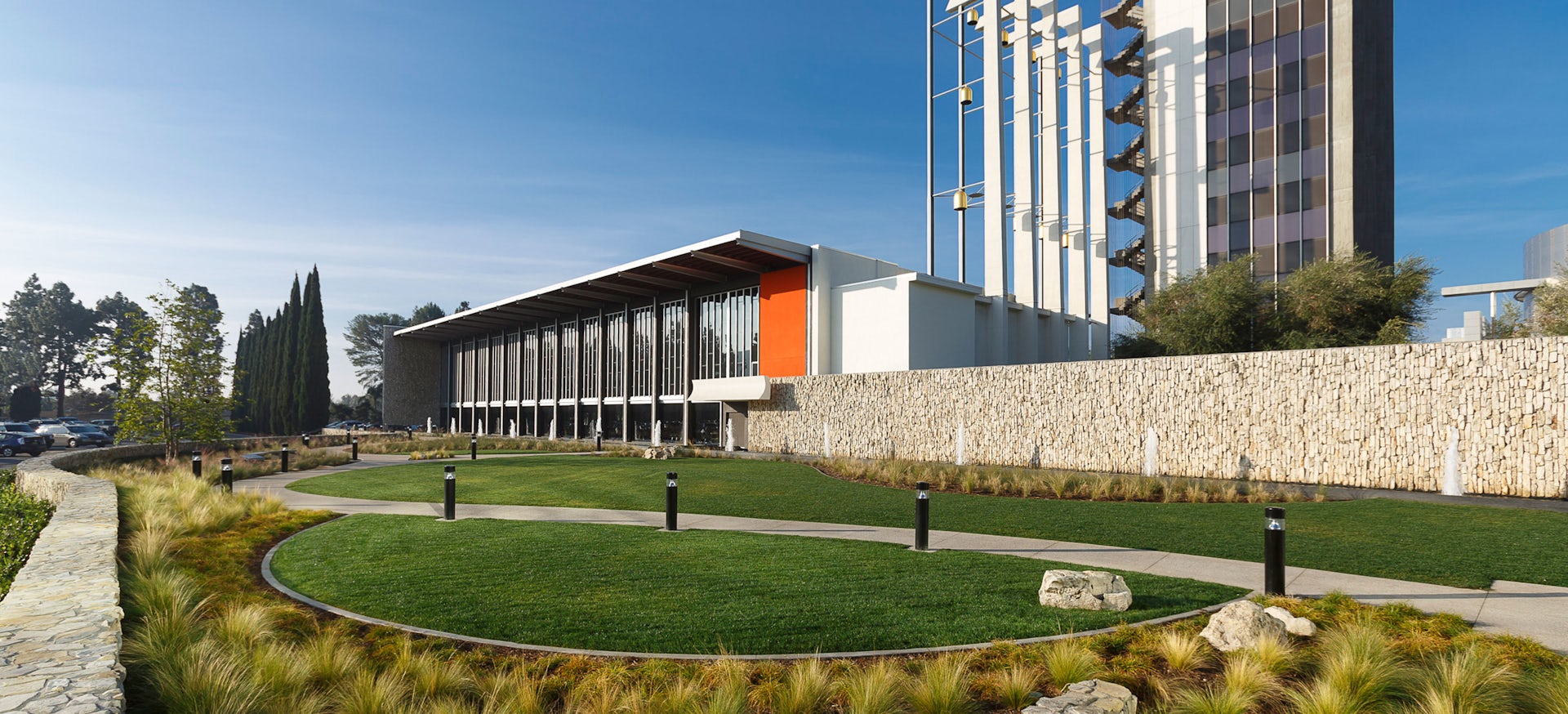by Anthony Paletta
...
Robert Schuller also loved architecture. When he tired of preaching twice each Sunday, at a drive-in and at a rented Baptist church, he decided to combine those buildings’ functions. He didn’t ask just anyone to carry out this bizarre commission, but Southern California’s premier Modernist, Austrian-born Richard Neutra. Neutra’s church in the complex, the Arboretum, is truly strange and greatly interesting. A basic rectangle, it was designed to accommodate worshipers inside on pews and outside in a semi-circle of parking adequate for 1,700 cars (“pews from Detroit” was Neutra’s description). The pulpit was located at one corner of the church and extended into a balcony. Glass doors would open, and Schuller would wander between interior and exterior while sermonizing.
It was a hit, and Schuller turned to Neutra for an administrative structure, the 13-story Tower of Hope, the tallest building in Orange County for a time.
How a Drive-In Megachurch Became a Catholic Cathedral

...
Work on the complex began soon after its acquisition. Rob Neal, an Orange County real-estate developer, served as head of renovations and chief operating officer on the project. “I did it as a volunteer, and I thought, ‘Well, how hard can it be?” he said. “I was wrong.” The years-long process entailed more than 100 site visits. Neal didn’t want any interim renovations, or to cut corners—these “had to be best-in-class renovations befitting the majestic architecture.”
The first project was the Neutra Arboretum. Jim Wirick, an architect with the firm LPA, supervised. It was, he told CityLab, “a fight with disaster from moment one,” because the structure was not air-conditioned.

“It was basically a hotbox … that’s why Schuller went to Hawaii every summer to write and made his son preach,” Wirick noted. He had two options. “We could put big units on the roof, or chunk out four feet of soil, make a concrete bathtub, and put the air [conditioning] underneath.” He argued strongly for the second option, but Neal opted for the cheaper roof units.
Wirick recalled: “I said, ‘We can’t do it.’ We’d get shamed in the architecture community if we did that. But he said no, so I walked away.” Neal called back a week later and conceded—they’d dig the bathtub. After the Arboretum came the Tower of Hope; the main challenge for it was, in Neal’s words, “an exhausting amount of seismic mitigation. ”
...














